In 2023, The Lego Group made a net profit of more than 13 billion Danish krone - which was equivalent to around €1.76 billion.
And that was actually down on the money it made in 2022 - because it was one of the big beneficiaries of pandemic, as people bought lots of sets online in order to keep their kids - or themselves - entertained during lockdowns.
Sales in the first half of last year were up significantly, too. It had revenues of 31 billion krone in the first six months of 2024 - which is about €4.2bn.
That means it could potentially have hit new highs for the full year last year.
It's also doing that at a time when the toy market in general is shrinking - so Lego is taking a bigger share than it did in the past.
But what’s perhaps most remarkable about that is that it’s doing so as a family-owned business.
Its parent company Kirkbi is an investment management firm operated by the grandchildren and great-grandchildren of Ole Kirk Christiansen - who invented Lego many decades ago.
It’s really rare nowadays to have a company get to this size and to stay fully private and family-owned. Usually, at some point, the lure of a stock market flotation becomes too strong. Or investment from a private equity firm is sought to help fund a rapid expansion - or to keep the business afloat during a challenging period.
But so far the Christiansens have managed to resist both of those temptations.
In doing so they've become one of the world's biggest toy-makers, but also had success in TV, film and gaming - with their Legoland resorts also perpetually popular.
Tell me about Ole Kirk Christiansen…
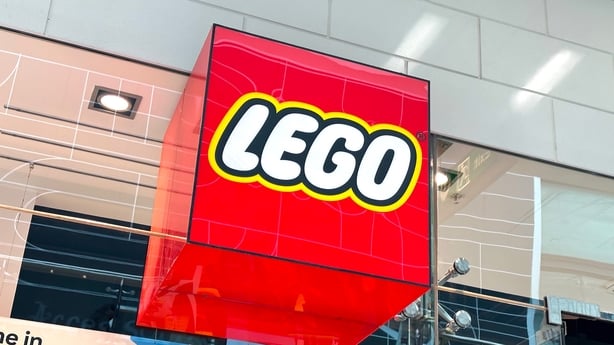
The man behind Lego was a carpenter by trade, working on building and repairing homes, and making products like ladders.
And it’s only after sales of his household products started to wane that he decided to start making children’s toys; like yo-yos and trucks.
That proved successful enough for him to set up a separate company called Lego - based on the Danish words 'Leg Godt’ - meaning ‘play well’.
And really it’s remarkable that this business became so well known. Really, it had no reason to survive its early years, let alone become the toy behemoth it is today.
Lego was established in 1932 - right in the middle of a great depression in Denmark. Around that time unemployment was in the region of 30-40% - and so people were struggling to pay for basics like food and shelter. Not a great time to try and convince them to buy a pull along wooden duck.
Just as the country was emerging from that, World War II broke out - and Denmark was occupied by Nazi Germany until 1945.
Although even before it was liberated, Lego suffered another catastrophe when an electrical fire led to its factory burning down - stock and all.
Somehow Christiansen managed to rebuild it - and it started operating again in 1944, though at the time it was still focusing on wooden toys only.
So when do we get the Lego that we know today?
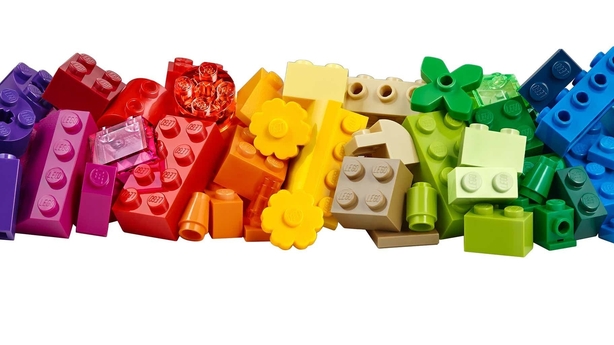
That started to emerge in the late 1940s - as the company began to experiment with plastic in order to work around post-war shortages of raw materials like wood.
They bought an injection moulding machine and eventually became aware of how a company in the UK - called Kiddicraft - was using a similar machine to make a product called the ‘Interlocking Building Cube’.
That was first patented in 1940- and the blocks are very similar to the Lego you can buy today. The main difference is that they’re hollow and have little slits on each side.
Lego does credit Kiddicraft as the basis for their brick - and they claim that in the 1950s they contacted the creator, Hilary Fisher Page, to ask if he would mind them making a copy. They say he had no objection at all and wished them the best of luck.
So by 1953 we had the Lego brick - with a tweak in the late 50s (add tubes underneath to make them more stable) giving us the brick we know today.
And that core design hasn’t changed since. In theory you could pick up a set in a shop now, and it would connect perfectly to a set that was bought more than 60 years ago.
But the sad thing is that, just as Lego was creating something that would ultimately make hundreds of billions of dollars in the future, Page’s business was struggling, and on the brink of bankruptcy.
He ultimately died by suicide in 1957 - about three years before Lego brought its bricks to British shores. That meant he never even saw the success others had with his creation, let alone benefitted from it financially.
Eventually, in the 80s, Lego bought up the residual rights to Page’s designs.
They did so just before launching lawsuits against other toy companies that had started making Lego-like toys of their own.
But you can buy off-brand sets that look like Lego… why is that?
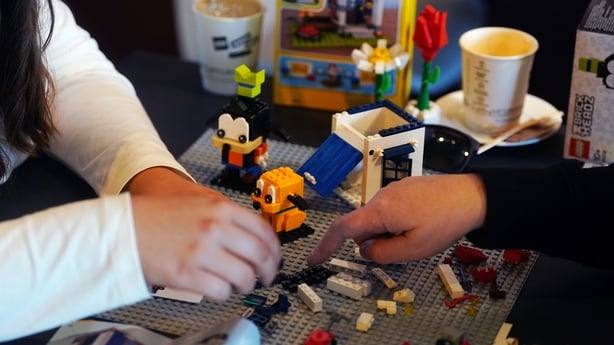
Because Lego no longer has a patent on the core design that it uses.
It would have patented the first Lego brick in the 1950s - and while it differs from country to country and has changed over the years, generally patents at that time lasted for 20 years.
That means, from the late 1970s on, Lego was starting to lose control over the use of the iconic brick design.
It would have constantly being filing new patents over the years on tweaks and new types of brick – so it didn’t all go at once. It’s also tried to introduce trademarks and copyrights wherever possible – so if a company tries to push its luck by looking too much like Lego, it has a chance at halting that in the courts.
But broadly speaking it no longer owns the Lego format - so you can buy a cheap set of blocks that fit with an official Lego set.
In reality, though, not all bricks are created equally.
Lego has put a lot of effort into ensuring their blocks use really good quality materials - so they don’t bend or break too easily – and they also have a tiny margin for error when it comes to the size.
They’re very specific in the plastic they use, and have rejected lots of alternatives over the years - and apparently the tolerances on their machines are somewhere in the region of two-thousands of a millimetre. That’s the maximum size difference that’s allowed between bricks.
And that all means the pieces fit perfectly together - and don’t bend or break too easily.
And when you pick up one of the cheap sets that don’t apply these kinds of standards, you usually can tell the difference almost immediately.
It’s likely this focus on quality is probably one of the first things Lego would have lost if it had ever opened the door to private equity - so we can be thankful that hasn’t happened.
And is that why Lego is so expensive?
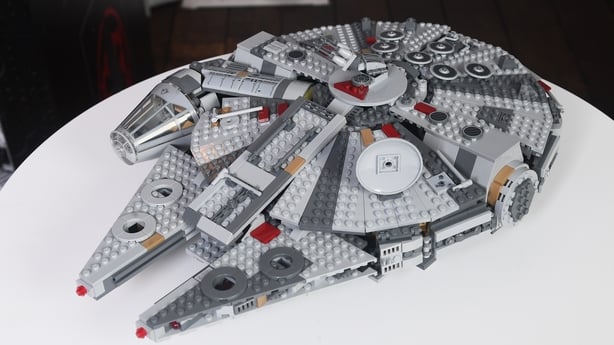
That’s absolutely part of it - they spend more on materials and manufacturing, so it costs more to make.
But that reputation for quality also allows them to position themselves as a premium product, essentially, so they can attach - by toy standards at least - a premium price point.
You can go into a Lego shop, or the Lego aisle of a toy shop - and see plenty of sets priced at €200 or more… you can get the Home Alone house for €300, Rivendell from the Lord of the Rings for €500, or the Millenium Falcon for €850.
But there are some other factors at play here… for example all of those examples are sets based on other brands – and this is something that has become a much bigger part of Lego’s business in the past 20 years, in part as a way of countering the loss of its patent.
So while it’s no longer the only brick-maker in town - it’s the only place to go if you want to get a set based on Harry Potter, or a Disney princess.
They’ve even just locked in a deal to make sets based on the smash hit cartoon Bluey later this year.
And these sets tend to come at a premium, in part because they can sell them for more.
But there’s also a practicality to that higher price, because the other company involved - like Disney, or DC, or Nintendo - has to get a cut too.
Another factor that’s led to the rising price is that Lego is now actively targeting adults - who obviously have a lot more money to spend.
For example its ‘Architecture’ range includes the Notre-Dame cathedral for €230 - its ‘Icons’ range includes the Titanic for €680. And these are sets that are meant to be built and put on a shelf as an ornament, rather than something you play with.
There are also ‘Botanicals’ and ‘Art’ ranges - in fact their site currently has more than 170 sets aimed specifically at adults.
And this is a remarkable about-turn by Lego.
Back in 2001, the White Stripes and Michel Gondry made a video for ‘Fell in Love with a Girl’ that was essentially an animation using Lego.
At the time Jack White claimed they contacted Lego to ask if they could make a White Stripes set to go along with a limited number of the single’s physical release - but they were turned down, and told that Lego only marketed to people aged 12 or under.
Have the sets gotten more complicated because of that focus on adults?

There’s definitely been an increase in complicated sets - there's an Eiffel Tower set with more than 10,000 pieces, for example.
And they’ve also started making more unique pieces that only fit in one particular design - rather than the more generic strips or bricks people know.
But while some people have complained about that, Lego was badly burned in the 1990s, in part because they moved to retire some of their more complex sets in favour of simpler ones.
And that decision contributed to a massive slump in sales that almost ruined the company altogether. It took moving back to more complex sets, and the likes of Star Wars licenced products - before they bounced back.
It is worth noting, too, that you can still go and buy a tub or a box of Lego if you want - and build what you want yourself... and those ‘Classic’ sets tends to be the best value too.
All of that plastic, though, has to have an environmental impact…
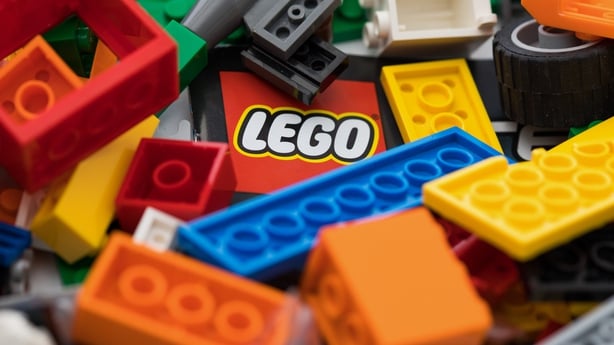
Yes, and the majority of its plastic is virgin - meaning it’s coming directly from fossil fuels rather than being recycled.
As of last year just 22% of the materials used were recycled or reused in some way.
It’s also very hard to recycle a Lego brick, too.
Now Lego does play on the fact that its products are durable and compatible with sets that are decades old - so there’s less need to throw it out - but of course the company is still producing emissions and waste.
Lego has pledged to improve - it says by 2026 it’s going to use renewable or recycled material in at least half of its bricks.
And it’s hoping to start using a new type of plastic, called ePOM, that includes captured carbon dioxide in it, at some stage this year.
Though it is worth pointing out that we’ve been here before, because in 2021 it announced major breakthrough that allowed them to make bricks from recycled plastic bottles.
At the time they said that would help it improve its environmental impact - but they abandoned the plan in 2023, because they found doing so would produce just as much emissions as the current fossil fuel-based products emit.
So they’ve obviously set ambitious targets before, only to drop them - and it’s not clear now whether they’ve found a better process that does reduce the environmental impact, or whether the move to more recycled material that they’re currently planning will end up being neutral in that respect.







